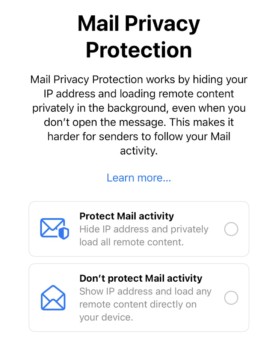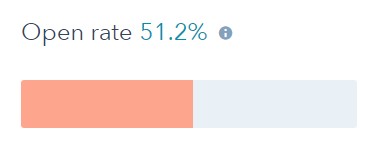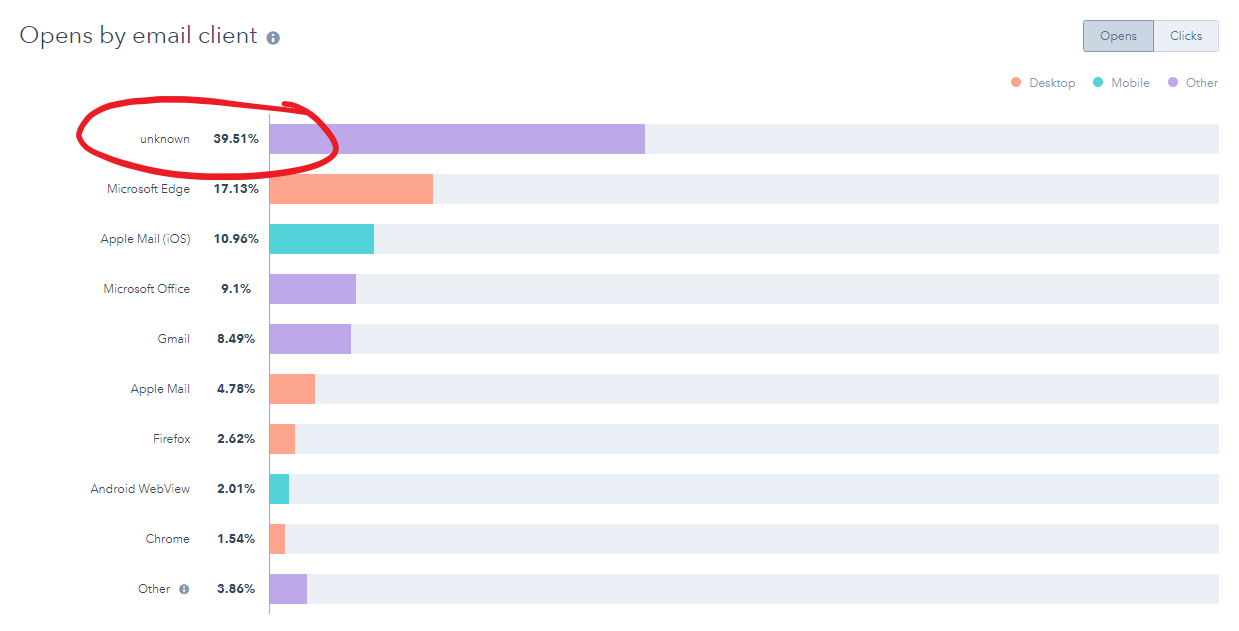
You may recall that we previously discussed Apple's privacy changes, specifically the impact iOS 15 was expected to have on email marketing. At the time, iOS 15, including its privacy update called Mail Privacy Protection, was just rolling out to Apple users.
Now, the iPhone update is fully rolled out. Additionally, macOS and iPadOS have introduced Mail Privacy Protection.
What is Mail Privacy Protection?
Mail Privacy Protection is a game-changer for email marketing. It allows Apple device users to opt out of email tracking through the Apple Mail app. For email marketers, this disrupts the ability to see if the email recipient opened your email or not.
This is what opting out of email tracking looks like for iPhone users:

As a reminder, Mail Privacy Protection is an option and users must opt in, but we can expect most users to choose to protect their privacy.
Prior to Mail Privacy Protection, email opens were recorded by including a tiny 1x1 tracking pixel in the email that was invisible to the recipient's eye. When the email was opened, the pixel loaded and the email platform reported the opened email to the sender. Now, the tracking pixel is cached on an Apple server before the email is opened (or not). This makes it appear as though every recipient has opened an email.
Just how many users are we talking about? Approximately 50% of email opens come from an Apple device, which means marketers have lost about half of email open data.
What Mail Privacy Protection Did to Email Open Rates
In most cases, reported open rates are now artificially inflated. Have you seen numbers like this?

In the past, a 51% open rate would be cause for celebration, especially for certain industries. Now we look at that number with a great deal of skepticism, unsure how many contacts really opened the email.
How do we know that our open rate numbers aren't accurate? This "unknown" email client is an indicator. This very large group (59.51% in the example below) presumably contains Apple mail users who have opted out of email tracking. Prior to this Mail Privacy feature rolling out, there was no "unknown" email client in this email marketing reporting.

What to Track Instead of Open Rates
Remember, this open rate uncertainty is a win for user privacy. Email marketers, on the other hand, have to adapt.
We know that click rate (the percentage of your email recipients who click a link in your email) is still an accurate metric. We recommend using this as a KPI going forward. As users click on calls-to-action within the body of the email, you can then determine if the message is resonating with your target audience.
One more bonus tip: Audit your email marketing
There are additional implications to consider as open rates are no longer a reliable email marketing metric. It would be smart to list all of the ways you are currently using email marketing, making sure to adjust strategies that previously relied on open rates.
For example, marketers who have developed sophisticated workflows triggered by email opens or contact engagement are affected. If you haven't done so already, automations need to be reworked or new automations should be created.
If your email marketing efforts previously included resending emails to contacts who did not open the first email, understand that Apple users who have opted into Mail Privacy Protection will no longer be able to receive the resent emails (because they will show as opened).
And if you previously used A/B testing to try out subject lines with two groups of recipients, those results are no longer reliable.
This is a tricky change to deal with but nothing you can't handle with concentrated effort in this area. If you need help getting started, we're here to help. Contact our team of digital marketing experts to discuss how your email marketing should evolve to accommodate Apple's privacy changes.







Agree, disagree, or just have something to add?
Leave a comment below.